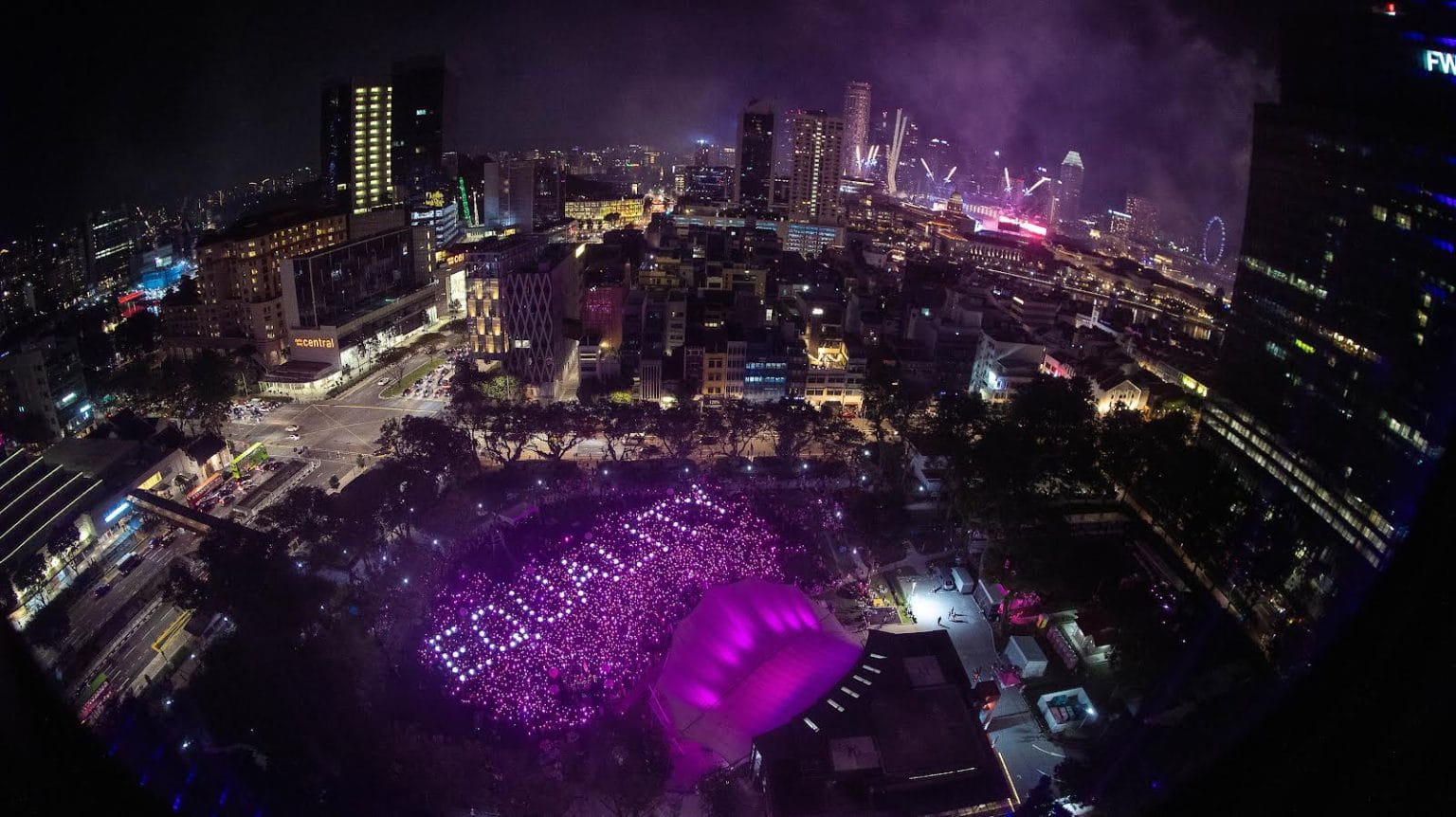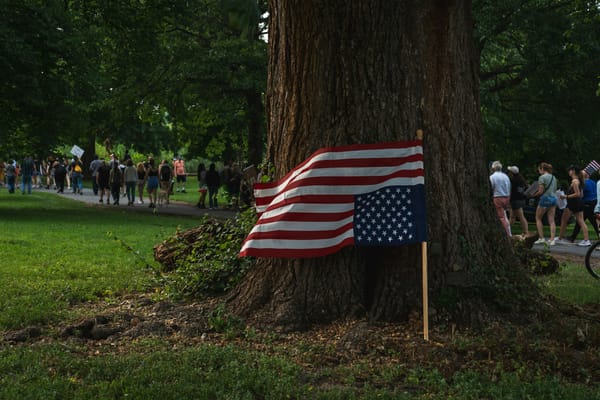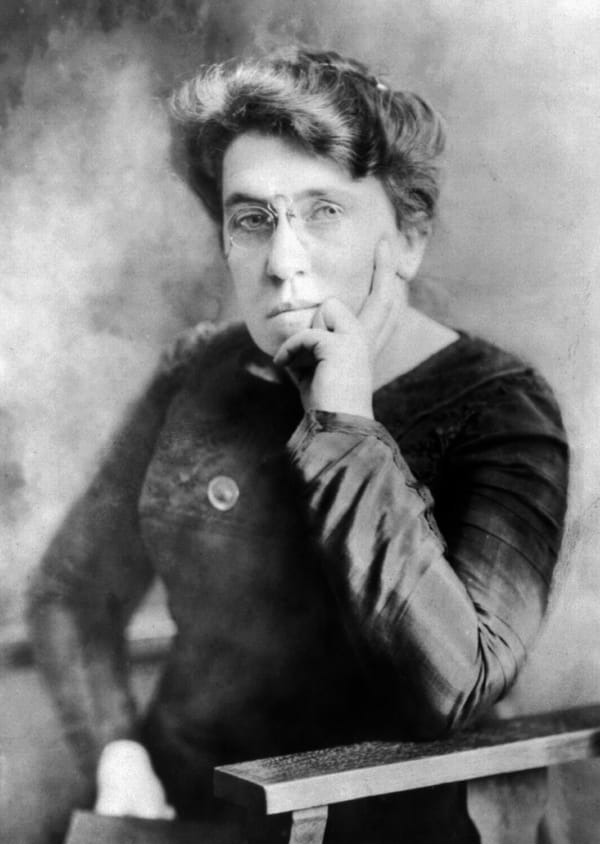Standing in the way of control

Or, the trap of visibility and the conundrum of putting your body on the line
In my neighborhood and adjacent neighborhoods in Chicago, there is a clear coordinated volunteer effort to provide visible symbols of community support and safety from ICE. Most obvious during school drop-off and pick-up times, you can observe people standing sentinel on street corners, whistles (often on bright orange lanyards) clearly hanging around their necks, phones in hand in case documenting a confrontation becomes necessary.
At a nearby Target a few weeks ago, ICE agents were staging in the parking lot. They ended up abducting at least one person, sparking a backlash and protest outside the store the following weekend. At the time, from bystander footage, it's clear that a few people tried to physically get in the way of the car ICE was driving; others stood back and filmed or blew their whistles and yelled.
All of these people — and all of their bodies — have been caught up in the choice of how to stand in the way of control. Yes it's a musical throwback, but it's also a very real question. What is your body doing, and how is it resisting control and domination? Is that resistance visible, and to whom?
In the last several weeks of ICE and CBP engaging in Operation Midway Blitz throughout Chicago, there has been so much active chatter on group chats across the city figuring out how to react and respond to needs, documenting ICE's movements, coordinating safety patrols, and bolstering each other's mental fortitude to keep going.
In one particular exchange a few weeks ago, someone reminded the hundreds of people in the chat that even if you don't feel like you're doing much, and even if you have to witness ICE dragging someone away to an uncertain fate, you should feel reassured that blowing your whistle, following them on foot or on your bike, giving people advanced warning—all of these actions are slowing ICE down, meaning that they couldn't possibly take as many people as if they had arrived unchallenged. Another group chat offered the occasional reminder: be sand, find a gear. Even if you can't stop the whole machine, a collection of individual particles can slow it down, deteriorate its mechanisms, render it broken or useless.
For those in the group chats who grew up in more resourced or white environments, being on school patrol in the mornings and afternoons or doing ICE watch during the day were perhaps among their first experiences with the idea that law enforcement can brutalize people, that the government isn't on your side, and that even "following the law" or "being peaceful" won't necessarily keep you out of harm's way. (And you can tell by how many people originally had the idea to simply call CPD to report ICE doing illegal things...) Some chats had more direct discussions about who — what types of people with what types of resources (citizenship, whiteness, body size, economic positioning) — should be on the "front lines" of this work.
Meanwhile, at the ICE facility in Broadview, protesters gathered day and night to observe, surveil, heckle, protest, pray, or dance. Many were brutalized directly by CBP and ICE, others by the Illinois State Troopers ostensibly called in to keep some sort of "peace." Several protestors caught federal indictments for "obstruction," allegedly for putting their bodies in the way of ICE vehicles to prevent them from doing their work.
That's where it starts to get real: what's your breaking point for how far you're willing and able to go to stop injustice? When are you willing to put your body on the line to do it?
Standing vs. moving against control
More than a decade ago now, I wrote a master's thesis exactly titled Standing in the Way of Control, which examined LGB/queer social movements throughout Southeast Asia in a series of case studies. I did a lot of semi-structured interviews with activists, including a fieldwork stint in Hong Kong. For me, the tension between overwhelming societal disapproval (and sometimes criminalization) around queer culture and the ability to successfully mobilize collectively was the interesting part: how could people act collectively in such a repressive environment, and at great personal and social cost?
In particular, at the time, there wasn't a lot of mainstream discourse in Asia to normalize queer relationships, let alone sex. So the taboo of even bringing up attraction seemed insurmountable. Having worked on US-based community organizing and messaging campaigns to normalize queer identities (a story for another time), I was curious how activists in Asia were overcoming the stigma of even talking about queer issues in order to mobilize around them.
What emerged from the organizations in Singapore, particularly PinkDot SG, was the most surprising to me at the time. Singapore inherited repressive legal conditions from British colonialism that marginalized queer people and directly criminalized queer sexual behavior: Section 377A of Singapore law criminalized consensual gay male sex, other acts "against the order of nature," or aiding and abetting all of the above. It mostly had not been enforced since the early 2000s, but it wasn't formally repealed until 2023.
I'll spare you the long history of the legal battles and organizing both for and against Section 377A, but what I want to highlight is that PinkDot SG (a play on the colloquialism for Singapore as "the little red dot") nevertheless managed to organize large public gatherings of queer people and their supportive family members in Hong Lim Park, and ran a series of public awareness campaigns precisely talking about the challenges that queer people face and how family members can support them despite the stigma. The visible public presence wasn't focused directly on repealing 377A—it wasn't an advocacy campaign directly, and wasn't focused on electoralism. What it did was, bring queer people out of the shadows and make them visible, make clear how many people and families and lives were impacted, and open a public conversation about a tough social and political issue.

PinkDot was only one example of the social movement organizations I examined, but what it demonstrates, still, is the value that having visible bodies willing to simply stand in the way can have—not allowing stigma or political restrictions or the potential of legal consequences to deter action. The de facto abandonment of enforcing 377A a few years prior certainly may have facilitated the action, or made it more thinkable, but collective action even toward visibility (especially without a galvanizing social or political aim) is itself no small feat.
I can already hear you thinking, ok, but what does that have to do with ICE, though?
Visibility and standing in the way... in the age of ICE
The thread I'm pulling here begins at symbolic action and "visibility." Where it ends... that's up to you. Many people were willing to proudly protest with pussy hats on in January 2017; supporters of Palestinian liberation have been wearing keffiyehs in support for years, and all the moreso since the most recent genocide commenced; millions of people turned out to the No Kings protests to make known their displeasure with the Trump administration. In digital fora, many were posting black squares on their Instagram accounts or posting continuously about the atrocities committed in Gaza by the Israeli military despite platform censorship. Of the millions who were willing to show up and "be visible," only a small fraction put their bodies, lives, and livelihoods on the line for these causes in that time.
The people in my neighborhood who dutifully stood watch for ICE each morning and afternoon with their whistles, or who went on bike patrol or volunteered for verification of suspected ICE activity—those people also were showing up and "being visible." But they were taking it a step further, and their "audience" for visibility was notably different. It wasn't about any social capital or being seen in dissent, per se (perhaps for some it was, I can't say); rather, it served as a clear signal to vulnerable neighbors that they were being watched after, and a visible deterrent to opportunistic ICE activity. At the same time, this willingness to be visible, in this way, didn't necessarily prepare anyone for going a step further. This is the trap of visibility here: it is a form of action, but it doesn't aggregate up through experience to more, different types of action—no matter how many times you stand on a street corner, you will not necessarily be more prepared for what comes next.
Standing in the Way or Jumping into the Fray
Given where ICE struck in the last month or so, many of these volunteers never had a face-to-face encounter with agents and never had to witness someone being hauled away. That also means they never had to make an uncomfortable choice about whether they would jump in and physically intervene, or stand back and call attention or document from a safe distance. To be clear, having that opportunity doesn't make anyone morally superior, but it does mean that some experienced a clarifying moment about their willingness to put their body on the line, while for others it remains a hypothetical they may or may not have fully considered.
But imagine for a moment, put yourself in their shoes: you already knew your neighbors were at risk, and you signed up for patrol with your whistle, ready to raise the alarm if you saw ICE in the vicinity. Maybe you're on high alert, full of adrenaline, wondering whether something more will happen. But then it does, all at once. If you were watching them take away one of your neighbors, and knew the detention conditions they'd confront, the trauma of the deportation procedure itself, and the risk of deportation to even worse conditions, would you stand back or jump in?
I ask because, it may not be something that many volunteers considered in advance. It may not even be something you can rationally decide in advance. Perhaps your reaction can only be emergent, perhaps your body would move before your mind had a chance to respond. No matter how many well-meaning people offer advice to get your legal affairs in order and make sure you're resourced before contending with law enforcement to any degree, you can't always anticipate danger, and you might not be able to anticipate your human instincts for compassion, either.
Many volunteers for ICE Watch and patrol received trainings—Know Your Rights trainings or specific ICE Watch instruction. But much like taking a CPR course, how you react in the moment and how much training you're able to bring to bear is in part a function of how you respond under stress, and in part a function of whether you practice. Knowing something intellectually and knowing it physically aren't always the same. And didactic learning about community safety tactics probably doesn't replace real life experience.
This gap in experience, and the difficulty of planning out all contingencies in advance, means there's also a very real gap in the our ability to move from simply standing in the way of control...to directly jumping into the fray.
Is being visible the same as putting your body on the line?

One of the most valuable things I've learned from years in partner acrobatics is about spotting: how to put my body on the line for someone else's safety (and the ability to trust, or not, that someone else would do the same for me). That means that I know how much practice is required, and how it's not reliable to assume that the people who seem most suitable for creating safety (big bodies with a lot of mass should be able to slow down a fall best, right? they can nab you right out of the air, right?) are the ones who actually do. On the contrary, it's often the people who have internalized the most injury or who know that their sheer size isn't sufficient, who do the most attentive and active spotting to keep others safe.
This works well as an allegory for community safety in a time of ICE in a few ways. It suggests, in part, that our assumption that, e.g., white cis men with large bodies, might not actually be the most physically or mentally prepared to jump in to prevent harm befalling their neighbors. (Anecdotally, many of the people I've seen standing watch aren't there because of their clear physical prowess—they're there because they're parents of children, so they understand the risk and how devastating it would be for a child to lose their parent to ICE.) It also suggests that the ones most able to respond in the moment, and the ones who will put their bodies on the line, are ones who have practice—ones for whom the danger of law enforcement isn't a new revelation, ones for whom the risk of brutality or arrest isn't a new fear.
Certainly there are countervailing examples—everyone is going to have their catalytic moment that shows in real time what their knee-jerk reaction is. But there isn't a clear linear trajectory from assuming the risks and responsibilities of visibility as a supporter of our neighbors, to taking on the physical task of making an abduction stop. And there's probably only so much mental preparation and prior training for emotional fortitude you can do to determine your own reaction in advance. One could even argue that too much pregaming of the possibility would lead to less action, since you wouldn't react spontaneously on the basis of instinct and values so much as delay while weighing the costs and benefits of your interference.
Are you standing still or moving into action?
In the collective sense, it's probably not reasonable to expect direct action at scale before symbolic action or "visibility" is normalized to some degree. In the individual sense, though, each of us can contend with questions about how we want to be able to show up in moments that challenge our politics in practice. There are many theoretical vehicles for how an individual can end up acting collectively: rational calculation on the basis of individual interest and benefit, cultural shifts and emotional experiences, frames and messages, social identification, or political opportunities and structural conditions.
Lithuania in the '40s is perhaps not the most obvious parallel to our current situation in the so-called United States, but nevertheless, the theory of action and resistance in that case—that small-scale actions assessed painstakingly for their risks could then be visibly successful and encourage more action and more risk acceptance—seems very plausible as a way of considering how initially peripheral actions (making zines and whistle bags) can escalate to participating in ICE Watch and could eventually escalate to physically obstructing the activities of the state. And even with ICE fading away from the Chicago scene to reappear elsewhere for now, this won't be the only possible time you're confronted with exactly how you might rise to the political occasion.
This isn't an essay about what you "should" be doing. I'm not interested in moralizing or suggesting that only "real" comrades take on "real" risks rather than posting on social media or having tough conversations with family. What I'd like to offer, though, is the idea that you should move with intention, however it is you're wanting to move in this moment, and should not just be considering the risks/benefits of your potential courses of action, but also considering your preparation for those actions. Very few people are prepared at a moment's notice to run into a burning building and save lives, but trained individuals do that on a volunteer basis every day.
So if your goal is to show up in a physical way, to be willing and able to put your body on the line for what you know you believe in, how are you practicing for moments of need? How are you defining your own line for engagement and determining when to withdraw or stand still, versus moving forward and jumping in? What will push you from waiting in the wings, to being visible in your values, to acting in accordance with them?




